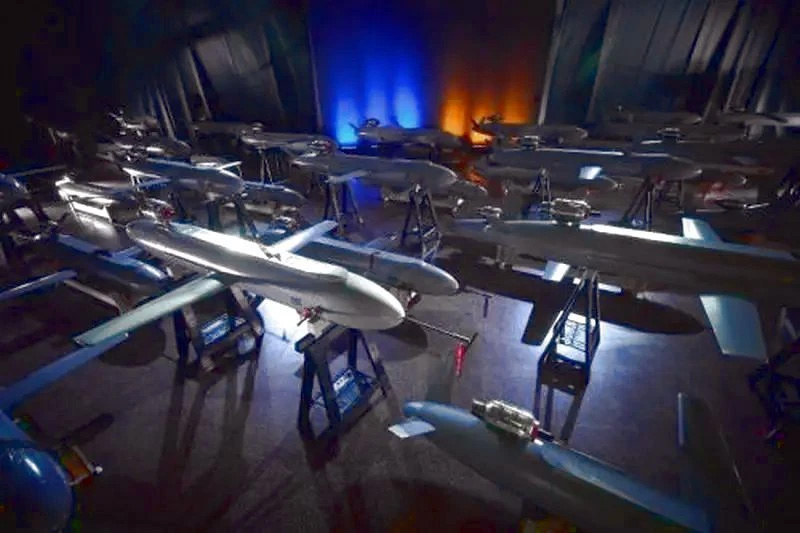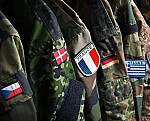Drones and missiles Lord, Palianytsia, Hell and Ruta: Ukrainian arguments for a just peace
In recent weeks, Ukraine has published several previously unknown weapons projects. Together with systems already in the Ukrainian arsenal and previously published projects under development, it is possible to estimate what equipment Kiev intends to deploy in the future. Despite the strengthening of the domestic defence industry, Ukrainians still have to rely on Western supplies. Without them, for example, they would find it difficult to attack Russian targets deep behind the front line.

"Our defense industry and our science. Their skills and work have made us stronger, because 30% of everything our men had on the battlefield this year was made in Ukraine," Ukrainian President Volodymyr Zelensky said in his New Year's speech. "Ukraine is making its own missiles again. And for the first time it is producing more than a million drones a year. It is forcing the enemy to learn Ukrainian. Palyanytsia, Hell, Ruta... these are all our arguments, arguments for a just peace."
President Zelensky does not intend to stop at words. The Ukrainians are working hard to raise their production capacity to a higher level and are investing their valuable resources in new weapons projects to bring a just peace to Kiev. The open-source summary below presents several systems that may soon bring the Russians to the negotiating table. First, let's mention the long-range propeller drone Lord. This drone can carry a payload of 22 kg, which can include both conventional warheads and functional equipment (e.g., for reconnaissance or transport). Other figures vary, at a cruising speed of 150-300 km/h the Lord system will travel a distance of between 750-2000 km. It is likely to be an improved version of the improvised originally two-seater aircraft that Ukraine used unmanned to launch attacks deep in Russian territory. Russian-language media have reported finding the wreckage of this drone, but these do not match publicly available photographs of the Lords, according to the website hartpunkt. It is therefore unclear whether this drone has already been used by the Ukrainians in combat.
The next system in today's review is the long-range "missile drone" Palyanytsia (a word originally referring to homemade Ukrainian bread). It has a top speed of 500 km/h with a range of up to 700 km. The drone can carry a conventional payload of 9-20 kg and is manufactured exclusively in Ukraine. Local Ukrainian sources sometimes claim that the Paljanytsia systems are powered by a jet engine, which contradicts the "missile drone" designation. The air inlet for the jet engine can be clearly seen in the available video footage. The expanded categorisation of "rocket drone" therefore appears to be technically incorrect, for example, it may have originally been due to a mistranslation. The Ukrainians have previously reported the start of mass production of the Palyanytsia systems, as well as their use in combat against Russian armed forces.
Third, Kiev now has a new type of mini-missile with a flat flight path, the Hell. With a maximum range of 700 km, the system can reach speeds of up to 700 km/h. The missile carries a conventional payload of unknown weight and is probably based on the design of the Paljanytsia drone. The missile currently lacks the ability to correct target coordinates in the final phase of flight. The missile is also powered by a jet engine that is not integrated into the fuselage, but is mounted on top of it. According to Ukrainian sources, the missile has already been successfully deployed in combat operations.
Finally, let us mention the Ruta cruise missile project with a range of 300 km and a maximum speed of 800 km/h. Photographs on the Internet and models shown at industrial events again show the air inlet, indicating jet engine equipment. The missile is reportedly capable of carrying a variety of payloads weighing between 30 and 100 kg, including reconnaissance payloads, conventional warheads and other payloads for testing purposes. The missile is equipped with inertial guidance and GPS navigation for mid-flight course correction. As with the Hell system, it is not known whether it also has the ability to change target in the final phase of flight. This capability could be added in the future. The shuttle is currently in the test phase and is not yet in active service.
Any long-range weapon that allows Ukraine to operate deep behind the front lines on Russian territory is a major advantage. Kiev and President Zelensky seem confident that the Ukrainians can ramp up production of cruise missiles and drones to unprecedented levels. If Ukraine manages to produce Lords, Palyants, Hellbenders, and Rutas of adequate quality and with the aforementioned capabilities, it will gain a significant and inspiring missile production capability for the West. All NATO countries (including the Czech Republic or the US) are seeking large numbers of relatively cheap but powerful small missiles and drones, but have not yet made adequate progress in transforming their production capabilities and processes.
Ukraine, on the other hand, has failed (or has not consciously sought) to complete the development of "heavy" missiles, such as cruise missiles reminiscent of the British-French Storm Shadow/SCALP-EG or short-range ballistic missiles capable of carrying much larger payloads. Although such projects exist for the Ukrainians (e.g., the Korshun surface-to-surface missile or the Sapsan/Hrim-2 short-range ballistic missile), reports in recent years indicate problems in completing their development and starting serial production.
Kiev is trying to gain the upper hand on the battlefield with its efforts to develop new missiles and drone-based missiles. But Russia is also working hard to expand its weapons production. The Ukrainian Military Intelligence Service (HUR) currently estimates the enemy army's arsenal at around 1 400 long-range missiles of various types. These include about 350 Kalibr cruise missiles, about 500 Oniks cruise missiles, an estimated 50 air-launched Ch-47M2 Kizhal missiles, about 130 9K720 Iskander missiles and about 400 Ch-35, Ch-55 and Ch-101 air-to-ground missiles. These stocks remain largely intact and, according to the Ukrainians, serve as a strategic reserve.
In addition, HUR regularly monitors the Russian defence industry and its ability to produce missiles. As HUR spokesman Andriy Yusov reported on 27 December 2024, Russia has managed to expand its production capacity for long-range weapons. For example, production of single-role drones is being stepped up, and in addition, Russian arms factories have the capacity to produce 40 to 50 Iskander missiles, 30 to 50 Kalibr missiles, and approximately 50 Ch-101 missiles per month (i.e., a total of 120-150 per four weeks).
If the GUR estimate is correct, the Russian armed forces will be able to fire about 150 missiles of these three types at Ukraine every month without reducing Moscow's strategic stockpiles. To ensure Ukraine's defence capability, therefore, Western states must regularly supply Kiev with at least a similar number of suitable defensive missiles. In the case of air defence, the more the better, as more than one interceptor missile is usually fired at an incoming missile to increase the chances of shooting it down. To this must be added missiles, drones and missiles of other types than Iskander, Kalibr and Ch-101.
If produced quickly and in large numbers, Ukraine's new missiles and drones will create serious new problems for the Russian armed forces. Even with a smaller payload, they will be more than sufficient to threaten unfortified targets, especially critical industrial and economic infrastructure. However, Kiev will continue to rely on its Western allies for supplies of heavy cruise missiles capable of effectively hitting fortified targets deep behind the front line. This also applies to the supply of ATACMs armed with cluster munition warheads to achieve area effects against targets of operational and, in some cases, strategic importance.










